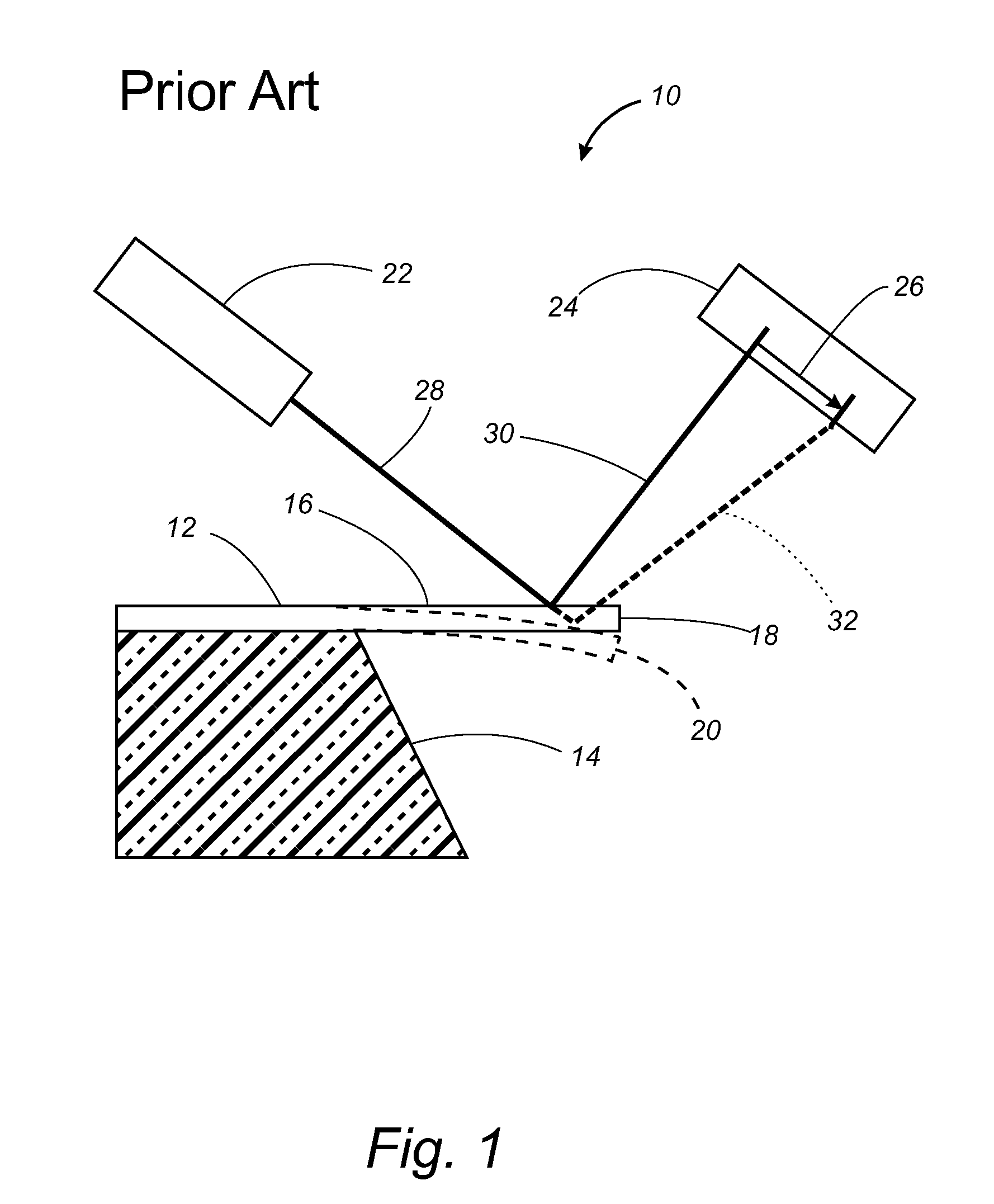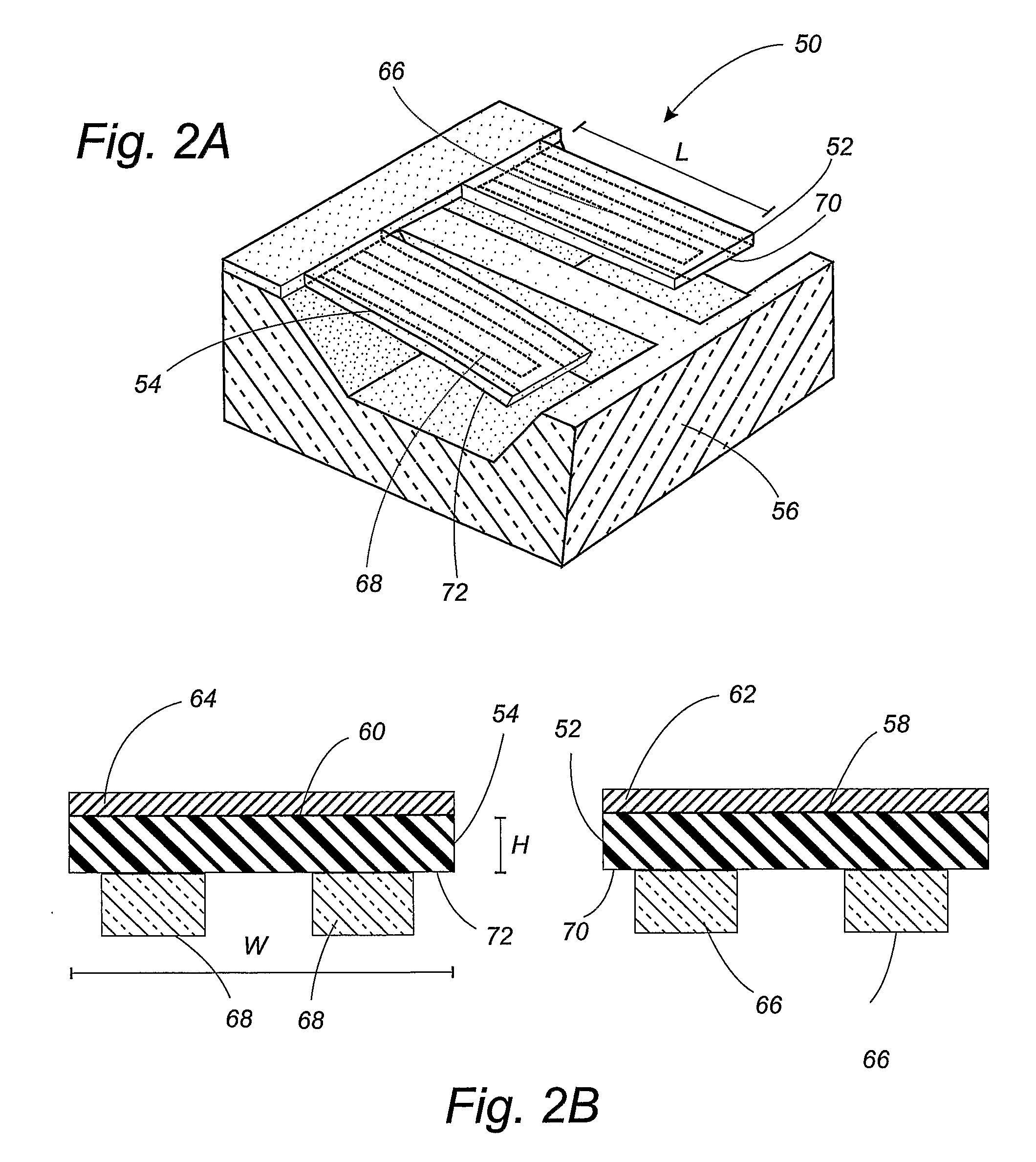Biosensor based on polymer cantilevers
a biosensor and polymer technology, applied in the field of polymer cantilevers, can solve the problems of high cost of optical systems, inability to miniaturize systems, and inability to process high density sensor arrays, and achieve the effect of easy and inexpensive processing
- Summary
- Abstract
- Description
- Claims
- Application Information
AI Technical Summary
Benefits of technology
Problems solved by technology
Method used
Image
Examples
Embodiment Construction
)
[0022]Reference will now be made in detail to presently preferred compositions or embodiments and methods of the invention, which constitute the best modes of practicing the invention presently known to the inventors.
[0023]With reference to FIGS. 2A and 2B, schematics of the piezoresistive cantilevers of the present invention are provided. Cantilever sensor 50 includes cantilever spring elements 52, 54 attached to supporting substrate 56. In some variations of the invention, supporting substrate 56 is a semiconductor wafer. Disposed over first sides 58, 60 of the cantilever spring elements 52, 54 are probe layers 62, 64. In order to act as sensors these probe layers will incorporate a suitable probe material that comprises a plurality of probe molecules or sites that bind to target molecules. Examples of biomolecular bindings that are used by the probe material include DNA hybridization, DNA-RNA binding, antigen-antibody binding, protein-ligand binding, and DNA-protein binding. Mor...
PUM
 Login to View More
Login to View More Abstract
Description
Claims
Application Information
 Login to View More
Login to View More - R&D
- Intellectual Property
- Life Sciences
- Materials
- Tech Scout
- Unparalleled Data Quality
- Higher Quality Content
- 60% Fewer Hallucinations
Browse by: Latest US Patents, China's latest patents, Technical Efficacy Thesaurus, Application Domain, Technology Topic, Popular Technical Reports.
© 2025 PatSnap. All rights reserved.Legal|Privacy policy|Modern Slavery Act Transparency Statement|Sitemap|About US| Contact US: help@patsnap.com



